
Hydrogen Fireball in a storage area using EFFECTS
As the global interest in hydrogen as a cleaner energy source continues to gain momentum, ensuring its safe storage and handling emerges as a critical priority. While hydrogen holds immense potential to reduce carbon emissions across industries, its highly flammable nature demands
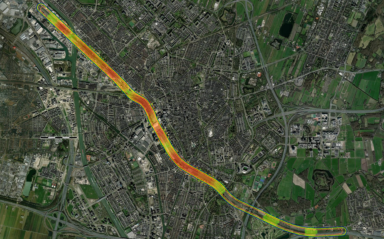
Understanding ethanol tank wagon transportation risks using Societal Risk maps
This article explores the calculation of Societal Risk maps through a case study of an ethanol tank wagon accident using Gexcon’s RISKCURVES QRA software.
We aim to showcase the advantages of using Societal Risk maps in your projects to support the safety enhancement of ethanol transport and protect the surrounding communities.
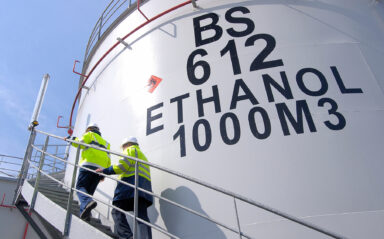
Ethanol: Associated hazards and safety measures
This article explores the risks associated with ethanol and outlines potential approaches to prevent and mitigate these hazards to ensure safety and prevent undesired events.
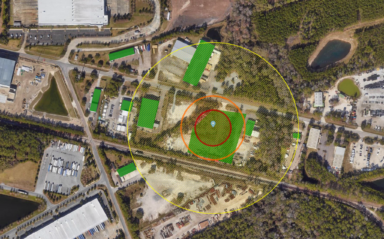
Modelling a runaway chemical reaction using EFFECTS to reproduce the conditions of the T2 Laboratories incident
This blog emphasises the vital role of consequence modelling in assessing the impact of a runaway chemical reaction. Using T2 Laboratories incident data, it showcases EFFECTS—Gexcon’s integral consequence modelling software—for simulating and quantifying the effects of a runaway reaction, particularly explosions.

Consequence analysis: 10 things to consider before performing your study
Consequence analysis is a critical aspect of process safety and risk management. Here are 10 crucial considerations to ensure a successful analysis.

How to model toxic dispersions in EFFECTS
Find out how to model the consequences of atmospheric dispersion for an accidental toxic release with EFFECTS consequence modelling software.
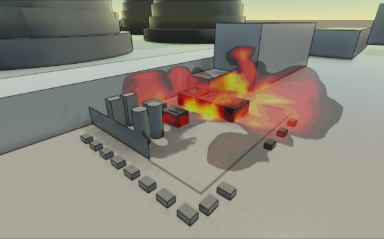
Hydrogen bulk storage areas: How advanced consequence modelling can inform a safer design and help reduce the risks from explosions
At this year’s Gastech Conference and Exhibition, Dr Karina Almeida Leñero and Pablo Giacopinelli will present a study of several explosion scenarios in a hydrogen storage facility, conducted using the CFD consequence modelling tool, FLACS-CFD.

Using advanced modelling tools to understand the hazards associated with liquid hydrogen in the aviation industry
Due to its unique flammability characteristics, the use of LH2 in aviation presents several safety challenges, from the materials used through aircraft refuelling procedures to the storage of large amounts of LH2 at or near the airport.
At the International Hydrogen in Aviation Conference, Gexcon will discuss how to use advanced modelling tools to understand LH2 hazards in the aviation industry….

Piper Alpha: 34 years of explosion modelling software development
The development of Gexcon’s industry standard software for dispersion, explosion and fire modelling is closely linked to Piper Alpha.

CFD Analysis of Explosions with Hydrogen-Methane-Air Mixtures in Congested Geometries
Blending hydrogen into the natural gas grid will support the de-carbonising effort in the energy system.
However, the safe use of hydrogen as a fuel presents different challenges than conventional hydrocarbon-based fuels.
At the 2022 International Loss Prevention Symposium, Gexcon will present the result of CFD-based explosion analysis of hydrogen-methane-air mixtures which was performed using FLACS-CFD consequence modelling software.

An extended procedure to predict flammable cloud generation resulting from tank overfilling scenarios
The early empirical approach to understand the tank overfilling scenario from the Buncefield accident was limited in its application.
Gexcon has expanded the model to calculate the vapour cloud generation due to the overfilling of a tank containing volatile liquid to consider other materials and (weather) conditions, which we will explain at the 2022 International Loss Prevention Symposium.

Why a hydrogen fireball should not be modelled as a BLEVE event
The resulting fireball phenomenon from a potential hydrogen release is still being modelled using traditional and potentially misleading methods.
During the 17th EFCE International Symposium on Loss Prevention and Safety Promotion in Process Industries, Gexcon’s Senior Research Scientist Hans Boot will present a paper entitled “Why a Hydrogen fireball should not be modelled as a BLEVE event”.
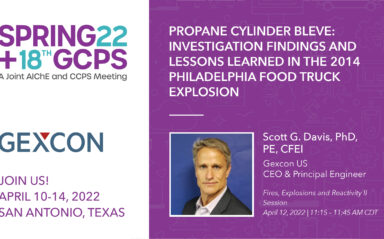
Learning from a propane cylinder BLEVE incident
Due to propane’s characteristics, there are safety-critical design features and procedures that should be implemented in the propane industry to ensure the safe use of propane.

Learning from ammonium nitrate explosion incidents
While extremely stable under most conditions, ammonium nitrate is also commonly stored in bulk quantities posing a risk if not properly protected against large fires. Despite knowing such risks, ammonium nitrate explosions have continued to occur in recent years.
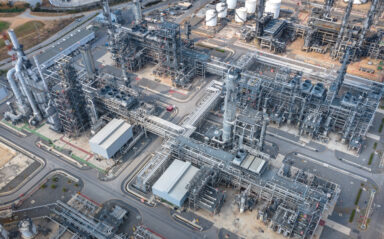
How to simulate Confined Vapour Cloud Explosions (VCEs) in EFFECTS
VCEs are generally seen as one of the most destructive accident scenarios in petrochemical operations. That is the reason why predicting potential consequences of VCEs is of extreme importance in safety assessments because this allows us to take mitigating measures adapted to the expected consequences.

Improving our understanding of hydrogen
During the 2022 Spring Meeting and 18th Global Congress on Process Safety, Gexcon US CEO & Principal Engineer Scott G. Davis, PhD, P.E., CFEI will present a paper entitled “Improving Our Understanding of Hydrogen through Testing and Advanced Modeling to Avoid Possible Pitfalls and Ensure Its Safe Use”.
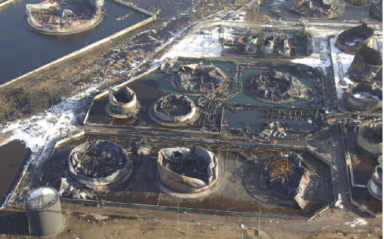
How to simulate the tank overfilling phenomenon
This blog explains explain how a tank overfilling phenomenon can lead to the generation of a very flammable vapour cloud, and how this phenomenon can be simulated in Gexcon’s consequence modelling software EFFECTS.

Gexcon UK welcomes new Principal Engineer Tony Uzzell
To support our continuing growth initiatives, we are pleased to welcome Tony Uzzell to our team who joins Gexcon UK as Principal Engineer.

Gexcon UK welcomes Tatum Cutfield as Process Safety Engineer
To support our continued growth plans, Gexcon UK is pleased to welcome Tatum Cutfield who joins the team as Process Safety Engineer.

Predicting consequences of toxic dispersion
Translating toxic concentrations into consequences requires a completely different approach than used with flammable clouds.
In this blog, we will try to explain the basics about deriving consequences from releases leading to a toxic cloud.